All college graduates leave the final year with hopes of joining some prestigious firm and making a name for themselves in a field of their choice. But they often hit a roadblock at the point of required skills for the job. Why is it so?
“Colleges teach 8051 microcontroller (MCU) as part of their curriculum,” says Surya Compella, founder of Kriyative-Edge, “and when it comes to looking for job opportunities, fresh graduates often do not have enough knowledge about the latest tech being used in the corporate world.”
Digging into the problem

Talking to the people currently catering to the field of education, major concerns raised are related to practical knowledge. “Current practical classes at colleges are based on viva and not hands-on experiments,” says Manish Joshi, deputy chief executive officer at Scientech. Now that is ironic.
The same has been seen in many colleges. Students are not allowed to use calculators till class XII, and are then expected to use an oscilloscope efficiently in the first year of graduation. Additionally, “Today, students require knowledge on multiple aspects to get hired for a particular technology,” says Dr Jonathan Joshi, chief executive officer, Eduvance.
The age of T-shaped skills for engineers is here, and working hard is just not enough. Learning smart has become the priority.
How academia is tackling this challenge
Smart classrooms enabled with truly modern equipment seem to be the potential solution. In order to understand this, let us consider a traditional case where, while teaching a class of 45 to 50 students, a teacher has to consider the entire class as a group of equals. This somewhere leads to below- and above-average students being ignored, since the majority of any class is average.
Specifically for higher education, smart learning methods like developer boards and e-learning tools have been claimed to be of a huge help by our contributors. More so because technical education requires getting your hands dirty. Pranay Kishore, founder – director, PhiRobotics Research Pvt Ltd, says, “Electronics is something you learn with hands-on experience.” Investing in technology, and more specifically the right technology, leads to the best learning. So let us take a deeper look at the new demand trends for technology from academia.
Get students actively involved with development kits
Ease of use with developer boards and compatibility with multiple programming languages are some of the factors that make it interesting for students.
“There are many products available in the market like drone products, wireless products, flex and force sensors, 3D printers and development boards, among others,” says Dileep Jain, sales head, Rajguru Electronics. The most popular here are boards such as Raspberry Pi iterations, which are more than enough proof that actively engaging the students in project development from within the college itself is the way to go. The Pi is not the only hot seller, though.
Compella says, “We use Arduino boards to help students develop interest in robotics.” Arduino has come up as a major solution for beginners in terms of technical education. Kishore supports the argument with, “It is more suited to hobbyists and high school students.” Once they know the boards, students can go for designing more complex projects with more specialised equipment.
While college labs tend to stock these boards, students may do better with many other boards available in the market. Today, there are many online retailers that have opened up shops to sell these. “Once we show the students the many possibilities with an ARM mbed board and programmable system on chip (PSoC) Bluetooth Low Energy (BLE) chip, their interest is exponentially increased,” adds Dr Joshi.
Development boards are good in the beginning where the students feel excited about clicking a few switches to see a light glow. Kishore feels that, “At some point they would have to do the programming for their own projects, hence such boards cannot be used indefinitely.” Once the students get comfortable with the tech, they have to move to other solutions. “Students often move to PIC MCU to implement their projects,” says Brijesh C.A., chief executive officer, Just Robotics.
Software tools continue to thrive
Ranging from simple software for beginners to complex integrated development environments (IDEs) capable of designing entire systems, we have a lot of technology available for students working on developing their skills. While schools have smart classes with digital study content to make learning easier, graduate and postgraduate colleges are also taking up smart teaching techniques using automation and simulation tools to make students understand or see the impact of certain design decisions.
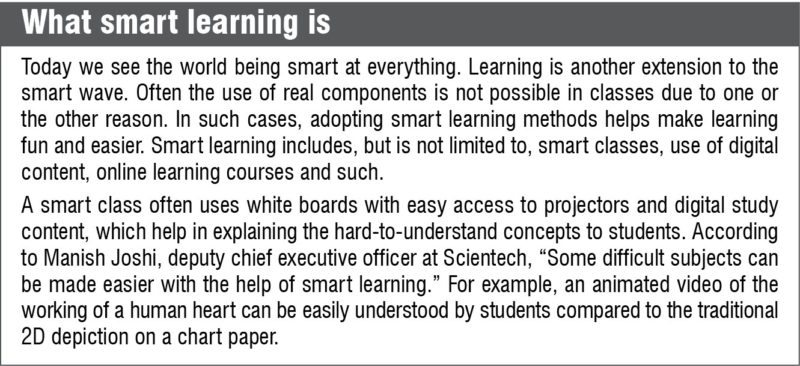
This has helped in getting the attention of students in class and increased student participation in class discussions. A report by Inderpreet Kaur Chachra on the effectiveness of smart learning found a significant improvement in student performance after exposure to smart learning solutions. You can read about it on the next page in the box titled ‘Case studies on smart classes.’
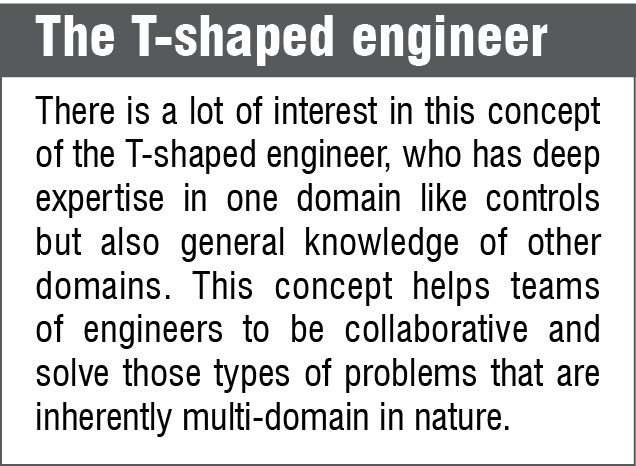 “Today, we have a lot of open source tools being used,” says Brijesh. This increases availability of good and efficient tools for students. Today, we have various tools like EasyEDA and MeowCAD that help in electronics designing, whereas CAD tools like Solidworks and OnShape help in bringing the product to life as envisioned by the engineer.
“Today, we have a lot of open source tools being used,” says Brijesh. This increases availability of good and efficient tools for students. Today, we have various tools like EasyEDA and MeowCAD that help in electronics designing, whereas CAD tools like Solidworks and OnShape help in bringing the product to life as envisioned by the engineer.
In engineering, tools like MATLAB are very popular and already part of the syllabus in many universities. Other popular tools that students use today include National Instrument’s LABVIEW, Proteus and Allegro PCB Designer.
That said, free alternatives to popular paid software are gaining steam with tools like SageMath, which is an open source mathematical software. Other popular tools include CadSoft EAGLE for PCB design, FreePCB, gEDA, Quite Universal Circuit Simulator, Ngspice, Icarus Verilog and KiCad.
One area that has seen a rapid increase in interest in getting started with software development tools is in the Internet of Things (IoT), which we cover next.
Covering the IoT for beginners
“There is a growing demand for connected devices,” says Compella. “Since the demand for IoT products is now higher, working with IoT development boards helps in speeding up product development.”
Dr Joshi adds, “ARM mbed boards have also come as a solution for college graduates in understanding IoT products.”
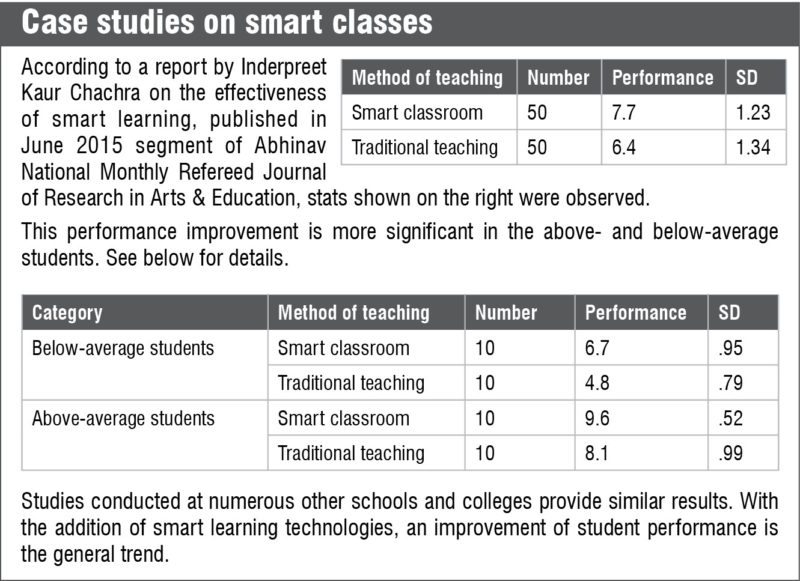
Such solutions that can develop products for the up-and-coming technologies and not for soon-to-be-outdated ones are ideally suited to learning. “People are spending on home automation and students can easily make home automation products for earning good money,” added Jain.
RIOT is one of the popular free operating systems for the development of IoT projects. Tools such as these are developed by a grassroots community, thus helping reduce product development costs. People have started using technology in fields that usually do not care for it, because of the significantly-lowered (it does not get lower than free) cost of entry.
Similarly-named RIoT is an ARM based board that is available for IoT developers. Variants of Arduino boards continue to be very popular for IoT projects, too.
Pathy Iyer, head of business development at Keysight Technologies, says, “Speaking about the IoT, we are already setting up a lab in NASSCOMM where students can come over and try out their designs. Device-to-device communications and new protocols specific to the IoT that are emerging can be tested here.”
Whatever happened to the college lab
Any electronics lab in a college would have at least a simple, low-frequency function generator for performing the basic electronics experiments. Similar basic test and measurement tools continue to sell, as usual. While conventional labs continue to exist in a majority of colleges, we are now seeing an increased interest in the setting up of remote labs and virtual labs in colleges.
“Equipment-wise, one area where we are seeing good interest coming from colleges is on the devices and semiconductor side. The new semiconductor fab coming up in Gujarat is a good example of something that can drive jobs in this high-technology sector. We are partnering with Hindustan Semiconductor Manufacturing (HSMC) for this,” adds Iyer. Arbitrary waveform generation, oscilloscopes, RF signal and function generators, design tools like Advanced Design System (ADS) and SystemVue electronic system-level design are what Iyer sees to be the most required.
3D printers have also made a strong presence in college labs, led by forward-thinking academia. B.M. Shah, proprietor, Edkits Electronics, says, “Costing for 3D printers has gone low, hence it is impacting big time.”
Prof. Arun Giriyapur, head – automation and robotics, BVB College of Engineering and Technology, adds, “Students can now create the final product. They can measure length of wires, position of components and heat dissipation to create optimal products via the 3D printer.”
This allows for T-shaped skill development in the students. Giriyapur explains, “We have teams consisting students from various streams collaborating on projects to increase their exposure to different engineering segments.”
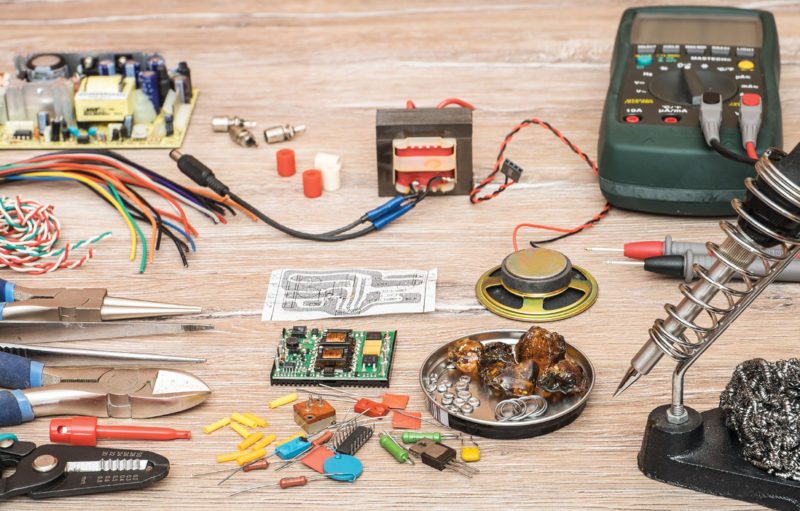
There is an interest towards mechatronics in students for graduation. It combines traits from most engineering streams to develop a new species of engineers. “Students are developing interest in mechatronics on a scale larger than ever before,” says Compella.
Shah adds, “Manufacturing plant monitoring using a Wi-Fi camera along with a development board can help in remote applications.” This move to mechatronics has been in large due to the various equipment that make learning easier. Giriyapur says, “We are further bringing in some more equipment that could help students develop their skills.”
New era of labs
While simulation based labs are set up based on a mathematical base, there are also experiment based labs where experiments are conducted and students get to have a feel of the data. Third type is the remote lab, where an actual lab is made available to users through any device connected through the Internet, iPhone, Android or a PC.
Essentially a laboratory controlled over the Internet, remote labs are designed exclusively for learning and monitoring any experiment integrated into the college lab. Electrono Solutions is one firm providing this solution in India.
On the virtual lab side is the desi Sakshat Virtual Labs started by Ministry of Human Resource and Development (MHRD). The team states on the website that the objective of this lab is to perform virtual experiments in basic electronics and yet have a close-to-real-life experience. The tool is designed such that students will get a feel of the real lab as its equipment, components and behaviour is mimicked by the system.
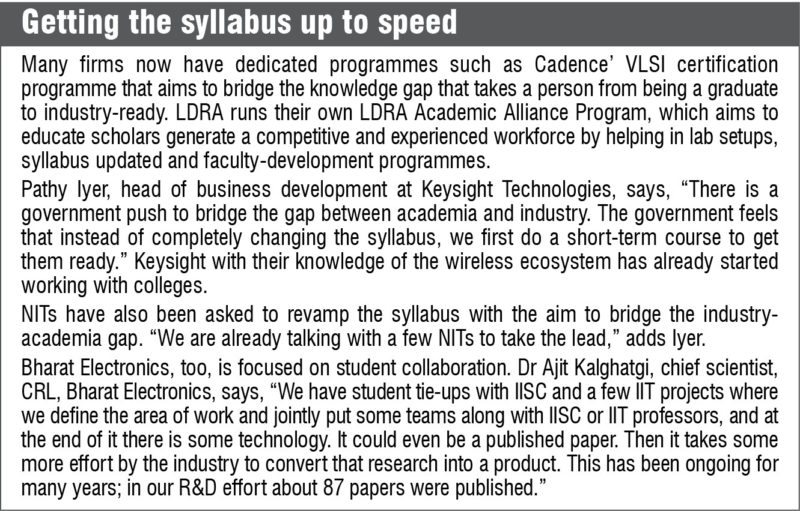
The virtual lab set up at NIT Surathkal is aptly named SOLVE—an acronym for Students Online Lab for Virtual Experimentation. NIT Surathkal alone has 70,000 users from all over the world at its virtual website (solve.nitk.ac.in), including a few thousand from Pakistan.
Various areas covered by these virtual labs include field-programmable gate arrays, basic electronics and others. For instance, IIT Delhi has a virtual wireless lab that gives students an actual experiment to learn from and keep modifying the antennae available to check propagation testing.
M-learning solutions
M-learning solutions ranging from Edula for basic aptitude learning to Eduvance for electronics hardware development, among others, are now helping students to efficiently utilise the time spent on their phones by increasing their skills. These solutions consist of a simple application that can be installed on a smartphone, and learning happens on the go.
Is there such a thing as too many tools
“Engineering is supposed to solve problems,” says Brijesh. A person who considers a challenge can smartly develop problem-solving skills. While it is granted that smart solutions make learning easier, is it sufficient to develop the required core skills for an engineer?
While some colleges are just getting on the bandwagon of bringing in development boards, others are trying to wean students off the development boards once the initial project is done, so that they develop more core engineering skills by building their own solutions from scratch. Iyer adds that tools like development boards tend to attract students to the wonders of engineering on one side, while on the other point them towards developing proficiency in software rather than base hardware.
A proper mix and match of both seems to be the best formula. Students are first taught how to rapidly prototype working projects using tools, and as the next step learn how to build projects from scratch.
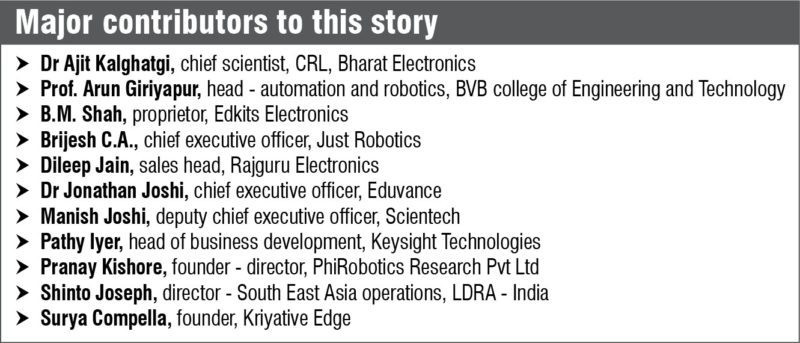
Dr Joshi recalls his student days with, “We used to have a designated class just to learn how to work with lab equipment.” Such additions in schedule of students can also help overcome the calculator-oscilloscope jump.
Saurabh Durgapal is working as technology journalist at EFY
Dilin Anand is a senior assistant editor at EFY.







